This post may contain affiliate links. If you click an affiliate link and make a purchase, I may earn a commission. Also, as an Amazon Associate, I earn from qualifying purchases.--
Are you tired of your chain falling off your front chainring while you’re out on a ride? It’s frustrating, isn’t it? Not only does it interrupt your ride, but it can also damage your bike or cause injuries if you’re not careful.
But fear not! You’re not alone in this struggle. Chain dropping is a common issue, especially for people who ride with a 1x drivetrain.
Your chain may be falling off your front chainring 1x due to several reasons, including bent chainrings, loose bottom brackets, and excessive chain angle.
In this blog, we’ll explore the reasons why your chain might be falling off your front chainring and share some simple fixes that can help you avoid this pesky problem. Let’s dive in!
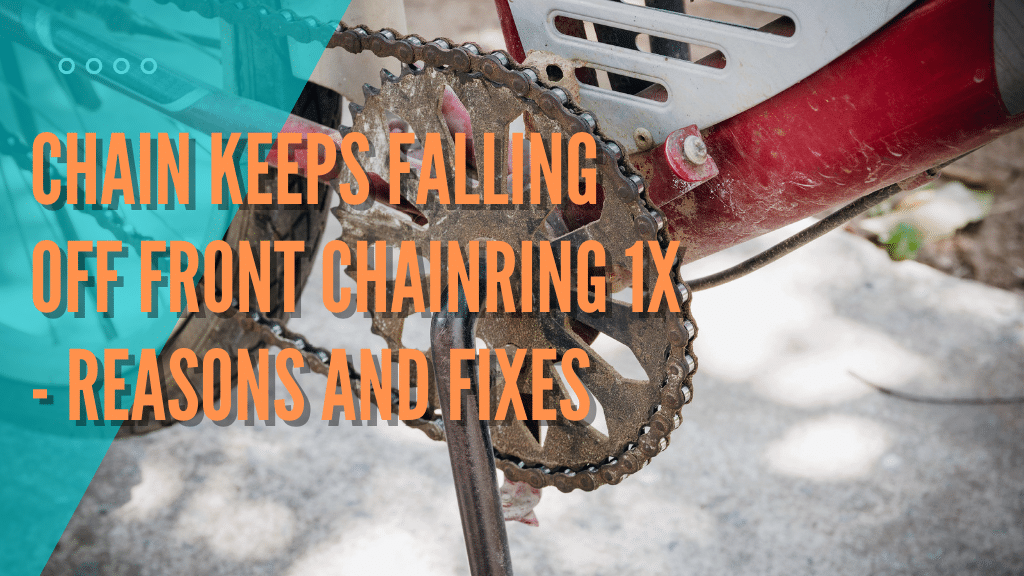
What is a 1x Chainring?
1x drivetrains are the latest trend in biking, and they’re all about simplifying your ride. By getting rid of the front derailleur, 1x bikes offer a cleaner, more streamlined look that’s sure to turn heads. But don’t let the lack of gears fool you!
These bikes make up for it with a wider-range cassette that gives you plenty of options for conquering those steep inclines. And with no derailleur shifter taking up valuable space on your handlebars, you’ll have more room to customize your bike with accessories that suit your riding style.
It’s time to simplify your ride and embrace the 1x revolution!
Say goodbye to redundant parts and hello to weight savings with a 1x drivetrain! By eliminating the front derailleur, cables, and extra chainrings, 1x drivetrains are lighter and more streamlined than their multi-chainring counterparts.
Plus, you’ll no longer have to deal with duplicate gears and the hassle of maintaining multiple derailleurs.
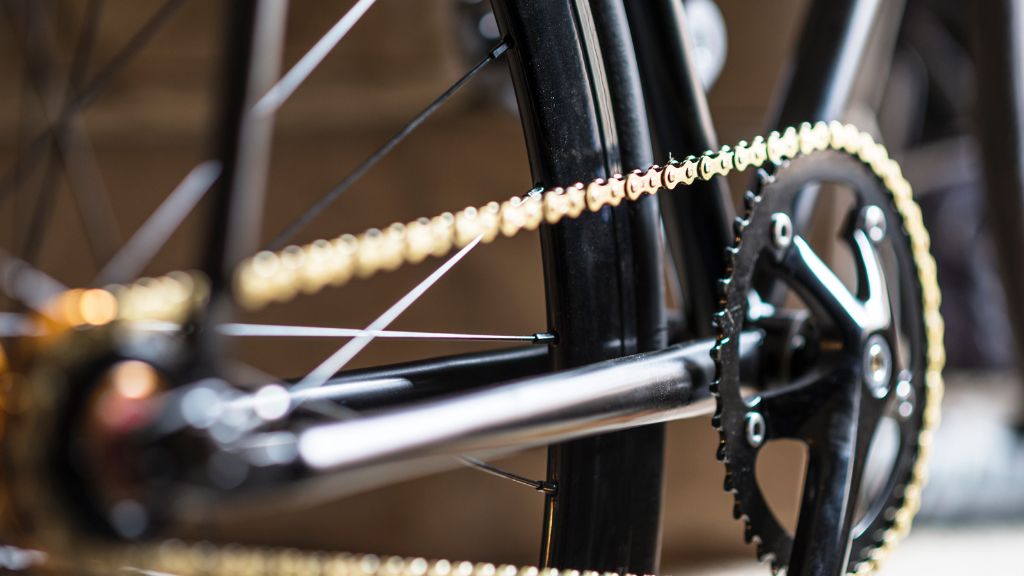
Reasons Why Chain Drops Off Front Chainring 1x
As a cyclist, few things are more frustrating than your chain slipping off the front chainring 1x. Not only is it an inconvenience, but it can also be dangerous. While some causes of chain drops are well-known, a lot of less obvious reasons can cause this issue.
Let’s explore 7 less obvious reasons that can cause your bike chain to drop off of the 1x chainring!
- Loose Bottom Bracket
A loose bottom bracket can cause the chainring to wobble, making it easier for the chain to slip off the ring. This issue is more likely to occur when you’re riding under heavy loads or on bumpy terrain. A loose bottom bracket can also damage the bearings and other components in your bike.
If you hear creaking or knocking sounds while pedaling, it’s a sign that your bottom bracket needs to be tightened or replaced.
How to Fix
The bottom bracket is an essential part of your bike, as it’s the bearing system that allows your crankset to spin smoothly inside the frame. Over time, the bearings or cups inside the bottom bracket can become loose, causing the crankset to wobble from side to side. This wobbling can lead to chain derailment, which is the last thing you want to deal with when cutting tight corners on a mountain trail!
To check for bottom bracket play, hold both crank arms and push and pull them sideways. If you feel any movement or looseness, then your bottom bracket needs attention.
Don’t wait too long to address a loose bottom bracket, as it can cause irreversible damage to the frame and other components of your bike. Ensure to replace your bottom bracket when this happens. Replacing a bottom bracket isn’t usually expensive and is well worth the investment in maintaining your bike’s performance and safety.
- Bent Chainring
A bent chainring is another less-obvious reason why chains can slip off the front chainring. A chainring can become bent if the bike is involved in a crash or if the chainring is struck by a hard object. A bent chainring can make it difficult for the chain to grip onto the ring, causing it to slip off during use. You may also notice that your chain skips or makes a grinding noise when you’re pedaling.
How to Fix
Bent chainrings can be frustrating, but with a little effort, you can fix them yourself. The first step is to lift off the chain and turn the crank slowly, inspecting the ring from above to see if it’s wobbling or misaligned. Once you’ve identified the issue, you can use an adjustable wrench with the jaws set to fit over the ring to straighten it out.
Do not attempt to bend the ring too far at once. Instead, start gently and work little by little, applying pressure to the ring at the wobble until it’s straightened out enough for the chain to stay on.
- Worn-Out Chain
A worn-out chain is a common cause of chain drops. As chains age, they can become stretched and worn, making it difficult for them to grip onto the chainring. If your chain suddenly starts falling off the front chainring, this is a likely cause. You may also notice that your chain skips or makes a grinding noise when you’re pedaling.
How to Fix
If you’re taking your bike for a ride often, the chain on your 1x drivetrain can become worn over time, which can cause it to fall off the chainring. This is because the chainrings need to grip the chain links well to keep the chain in place.
So, it’s a good idea to check your chain for wear regularly using a simple tool called a chain wear gauge. This will help you keep an eye on your chain’s condition and replace it before it becomes too worn and you’re stuck with a dropped chain in the middle of a race!
You can use the Rohloff HG/IG Sprocket Wear Indicator to determine if your chain needs to be replaced. You can find it on Amazon here. The following video shows how to use it to identify worn cassette teeth:
- Large Chain Angle
Are you tired of your chain dropping mid-ride? One of the culprits could be cross-chaining, which causes an excessive chain angle that stresses your hardware and leads to a dropped chain. But that’s not all.
Riding with an excessively slanted chain angle not only causes chain rub but also leads to decreased efficiency in 1x drivetrains, making them less efficient than 2x drivetrains with a wider gear range.
Moreover, with extreme chain angles, your chain may wear at a faster rate than on a 2x or 3x drivetrain system, which can be costly in the long run (Source).
How to Fix
Don’t let chain drop put a damper on your ride! Fortunately, fixing this issue is a breeze and only requires a bit of mindfulness when you’re out and about. By avoiding the extremes of your gears and sticking to the middle of the pack, you can prevent excessive chain angles and give yourself more options for shifting.
This not only reduces the chances of chain drop but also helps keep your drivetrain humming along for longer.
So, the next time you’re hitting the road or trail, keep an eye on your gear usage and steer clear of cross-chaining. Your wallet and your hardware will be grateful, and who knows, you might even set some new personal records with a smoother and more efficient ride!
- Chainring Wear
Over time, the teeth on the chainring can wear down, making it more difficult for the chain to grip onto the ring. This can lead to the chain slipping off the chainring, especially under heavy loads.
How to Fix
If you notice that your chainring teeth are worn out, don’t worry, it’s a common problem. The only solution for this is to replace the chainrings altogether. You can easily tell if the chainring teeth are worn out when the chain links fit loosely on the teeth and the teeth become hooked.
It’s not always easy to see chainring wear, but you can keep track of your mileage and riding conditions to learn from experience how soon you can wear out 1X rings. It’s always a good idea to have a spare chainring on hand, just in case.
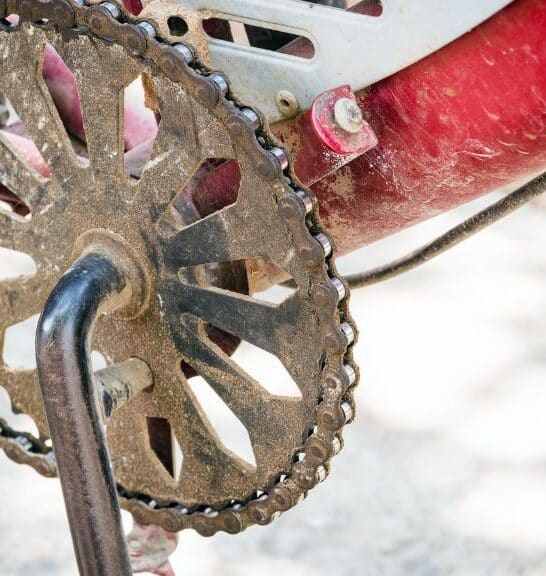
- Chain Incompatible with 1x Drivetrain
Installing a new chain on your bike can be an exciting moment, but it can quickly turn into a frustrating experience if the chain is not compatible with your drivetrain.
Using a chain that is not designed for your specific speed drivetrain can cause it to skip, jump, or not shift properly. This is because the spacing between the cogs on your cassette is not matched to the width of the chain.
How to Fix
Don’t let a chain disaster ruin your ride! Ensuring your bike’s chain is compatible with its drivetrain is crucial for smooth performance and avoiding the risk of chain breakage or a clunky ride.
For bikes with a single sprocket on the crankset and another on the wheel, a one-speed chain with a 1/8″ (3.3mm) nominal roller width is the way to go. But, if you’re riding a bike with multiple rear cog sets and a derailleur, a different chain design is needed due to the narrower spacing between the cogs.
The solution is to check the specifications of your bike’s drivetrain to determine the perfect chain speed and width for your ride.
- Rough Terrain
Rough terrain can be a real challenge for any rider, and it can also cause the chain to slip off the front chainring. Bumps, rocks, and other obstacles can cause the chain to bounce and come off the chainring.
How to Fix
Rough terrain can cause the chain to bounce and come off the chainring. To prevent this, try to avoid rough terrain when possible or adjust your riding style to better handle it. However, in situations where you simply can’t avoid treacherous trails (like offroading); consider installing a chain guide or clutch derailleur.
One option is a chain guide – a simple device that attaches to your bike and acts like a safety net for your chain, preventing it from slipping off the chainring.
But if you’re looking for a more advanced solution, a clutch derailleur might be the way to go. This innovative type of rear derailleur uses a special friction clutch to keep the chain in place, even on the bumpiest terrain.
Using these devices can make all the difference in preventing chain drops caused by rough terrain. Additionally, consider using a chain lube designed for off-road use, as it can help improve chain retention and reduce the likelihood of the chain slipping off!
Here is a summary of all the 7 reasons and fixes, for your convenience. Ensure to share it with your friends going through this issue.
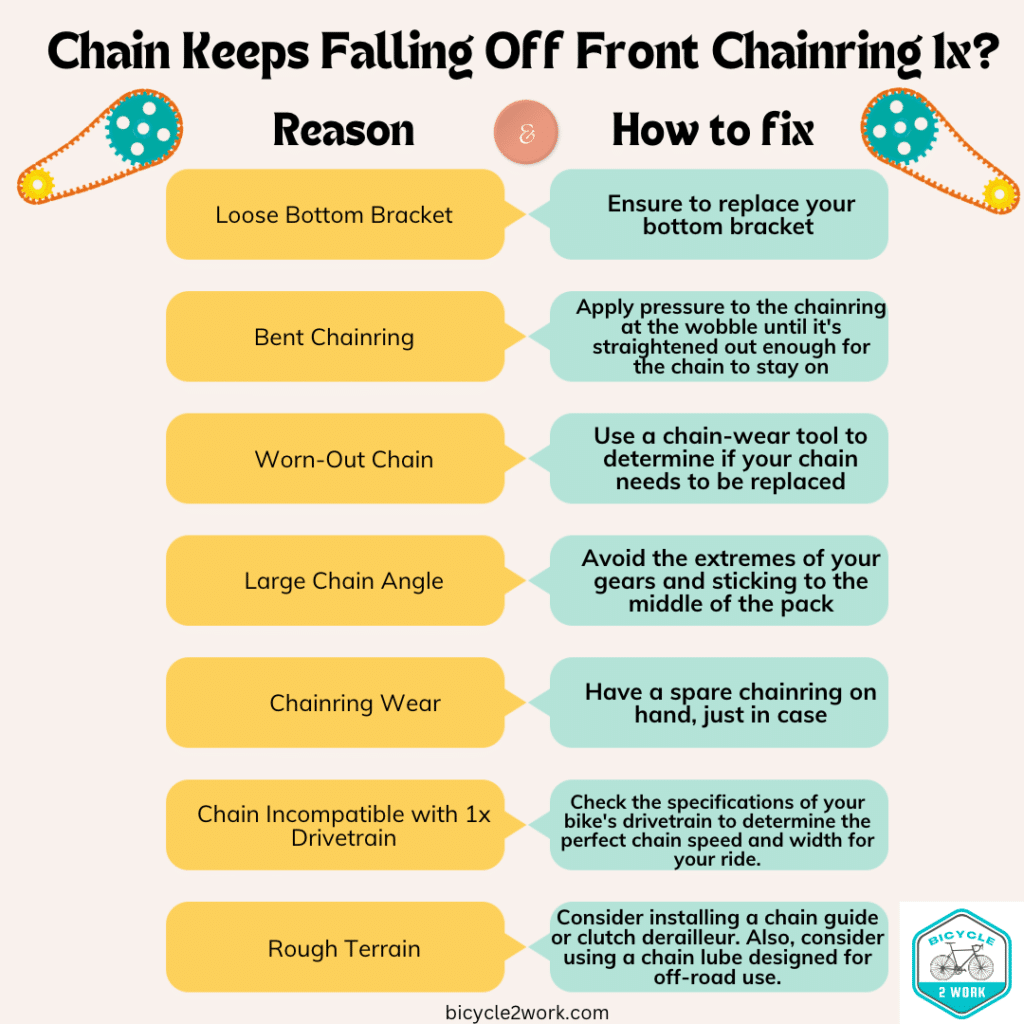
The Rise of 1x Drivetrain – Why is it still Popular?
Over the past decade, 1x drivetrains have made a special place in the heart of many cyclists like us who are looking for freedom when riding. This popularity can be attributed to the emergence of three crucial technological advancements! (Source)
● Wide-Range Cassettes
One of the key factors behind the 1x drivetrain’s success is the availability of wide-range cassettes. These cassettes allow cyclists to have a broad range of gears without the need for a front derailleur.
The 1x drivetrain typically has a narrow-wide chainring in the front and a cassette with a broad range of gears in the rear, providing cyclists with enough options to tackle any terrain.
● Clutch-Style Rear Derailleurs
The second technology that has contributed to the rise of the 1x drivetrain is the introduction of clutch-style rear derailleurs. These rear derailleurs have a mechanism that adds tension to the chain, preventing it from bouncing around and making noise.
This added tension also helps keep the chain from falling off, which was a common issue with older 1x drivetrains.
● Better Chainrings
Finally, the development of chainrings that hold the chain on better has also played a crucial role in the success of 1x drivetrains. These chainrings have a unique tooth profile that interlocks with the narrow-wide chain, holding it in place and reducing the likelihood of it bouncing off during rides.
The chainring’s design also promotes better power transfer and improves chain retention, making it easier for you to maintain their momentum during bumpy rides through the dirt!
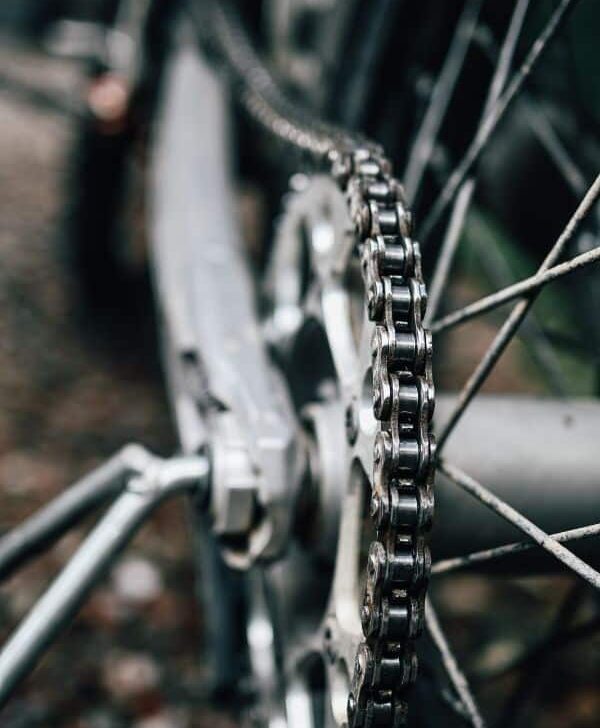
Conclusion
Ensuring that your chain stays on your front chainring is essential to have a smooth and safe ride. With a 1x drivetrain, there are several reasons why your chain may be falling off, including bent chainrings, loose bottom brackets, and excessive chain angle.
By understanding these reasons and utilizing the proper fixes such as straightening your chainrings or adjusting your bottom bracket, you can quickly solve the issue and get back to enjoying your ride. Don’t let a dropped chain ruin your ride – take action and keep your drivetrain in top shape!
